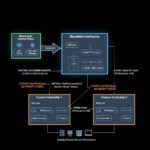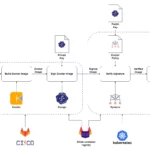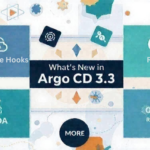
The GitOps Bridge is a community-driven initiative aimed at demonstrating the best practices and patterns for seamlessly integrating the creation of Kubernetes clusters with ongoing management through GitOps. By focusing on leading tools like ArgoCD and FluxCD, both of which are CNCF-graduated projects, this project serves as a valuable resource for Kubernetes administrators and DevOps practitioners.
Bootstrapping ArgoCD
For those interested in a practical example, the GitOps Control Plane GitHub repository provides a template for bootstrapping ArgoCD. This resource is designed to help you get started with GitOps by setting up a control plane that manages the deployment and configuration of applications across your Kubernetes clusters.
Creating Kubernetes Clusters
A variety of tools are available for creating Kubernetes clusters, ranging from “roll-your-own” solutions like kubeadm, minikube, and kind, to cloud-managed services such as Amazon EKS. Regardless of the method used, the GitOps Bridge ensures compatibility with GitOps engines, enabling users to manage their clusters through GitOps seamlessly. This includes advanced scenarios where Kubernetes itself is used to create other Kubernetes clusters using tools like Cluster API (CAPI), Crossplane, and Amazon’s ACK.
Importance in Cloud-Managed Kubernetes Clusters
The GitOps Bridge becomes especially valuable when dealing with cloud-managed Kubernetes clusters, which often have deep integrations with cloud services. When installing tools via GitOps in these environments, it’s crucial to configure the tools with metadata about resources or workload identities (such as IAM roles). This metadata is typically generated by Infrastructure as Code (IaC) tools like Terraform, CloudFormation, or cloud CLIs. The GitOps Bridge provides patterns to transfer this metadata into the GitOps workflow, leveraging the specific capabilities of the chosen GitOps engine.
Compatibility with SaaS GitOps Engines
The GitOps Bridge is designed to work with GitOps engines running as SaaS, such as the Akuity Platform, CodeFresh, Weaveworks, and others, ensuring broad compatibility and ease of integration.
The GitOps Bridge Pattern
The GitOps Bridge Pattern empowers Kubernetes administrators to use IaC and GitOps tools for deploying Kubernetes add-ons and workloads. Add-ons often rely on external cloud resources, and their Helm charts require configuration metadata for these resources. While IaC tools create these resources, they store the necessary metadata within GitOps resources or a Git repository. The GitOps tool then extracts this metadata and applies it during the Helm chart installation, forming the crucial bridge between IaC and GitOps.
Example Patterns and Use Cases
To help you get started, the GitOps Bridge Pattern includes several examples:
- argocd-ingress
- aws-secrets-manager
- crossplane
- external-secrets
- multi-cluster/distributed
- multi-cluster/hub-spoke
- multi-cluster/hub-spoke-shared
- private-git
These examples demonstrate various ways to create Kubernetes clusters and bridge the metadata to the GitOps engine, with additional resources available in the GitOps Control Plane repository, which includes ArgoCD “App of Apps” templates.
Terraform and the GitOps Bridge
While Terraform provides providers for Helm and Kubernetes, it is designed to maintain control over the state of Kubernetes resources. Any changes made outside of Terraform, such as those using kubectl or GitOps tools like ArgoCD and FluxCD, can cause inconsistencies in Terraform’s state management. The GitOps Bridge addresses these challenges by ensuring stable integration and state management.
Current Status of GitOps Integrations
- ArgoCD: Integration with IaC tools like Terraform, EKSCTL, CDK, Crossplane, CAPI, and Pulumi is stable and recommended for use.
- FluxCD: Integration with IaC tools is currently in progress, with ongoing improvements to achieve similar stability.
The GitOps Bridge project is a significant step forward in automating and streamlining the management of Kubernetes clusters using GitOps principles. By bridging the gap between cluster creation and GitOps management, it ensures a more efficient, consistent, and scalable approach to Kubernetes operations.
Explore the GitOps Bridge today and start leveraging these best practices to enhance your Kubernetes environments!
Reference to the Article : Github
Follow us for more Updates










